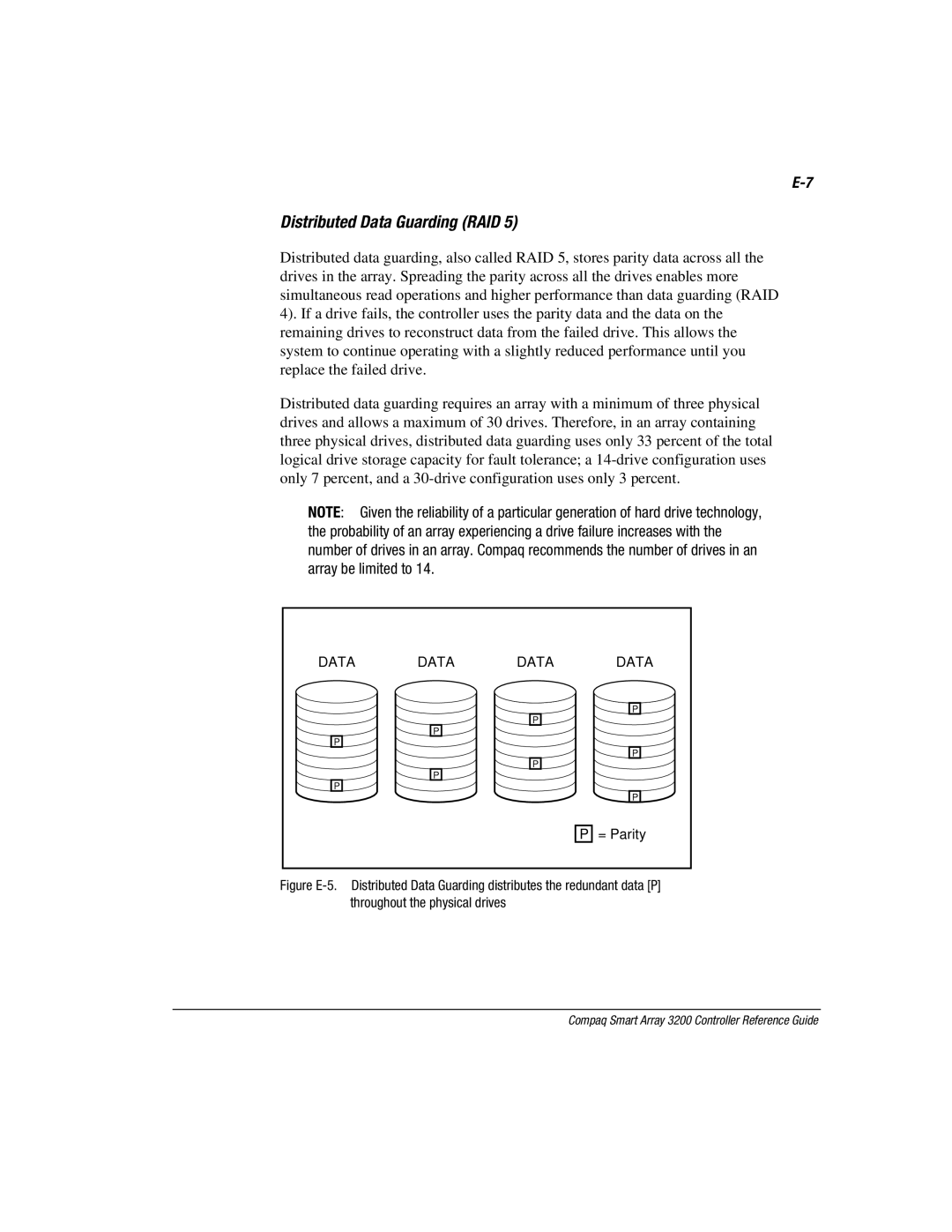
Distributed Data Guarding (RAID 5)
Distributed data guarding, also called RAID 5, stores parity data across all the drives in the array. Spreading the parity across all the drives enables more simultaneous read operations and higher performance than data guarding (RAID 4). If a drive fails, the controller uses the parity data and the data on the remaining drives to reconstruct data from the failed drive. This allows the system to continue operating with a slightly reduced performance until you replace the failed drive.
Distributed data guarding requires an array with a minimum of three physical drives and allows a maximum of 30 drives. Therefore, in an array containing three physical drives, distributed data guarding uses only 33 percent of the total logical drive storage capacity for fault tolerance; a
NOTE: Given the reliability of a particular generation of hard drive technology, the probability of an array experiencing a drive failure increases with the number of drives in an array. Compaq recommends the number of drives in an array be limited to 14.
DATA DATA DATA DATA
P
P
P
P
P
P
P
P
P
P = Parity
